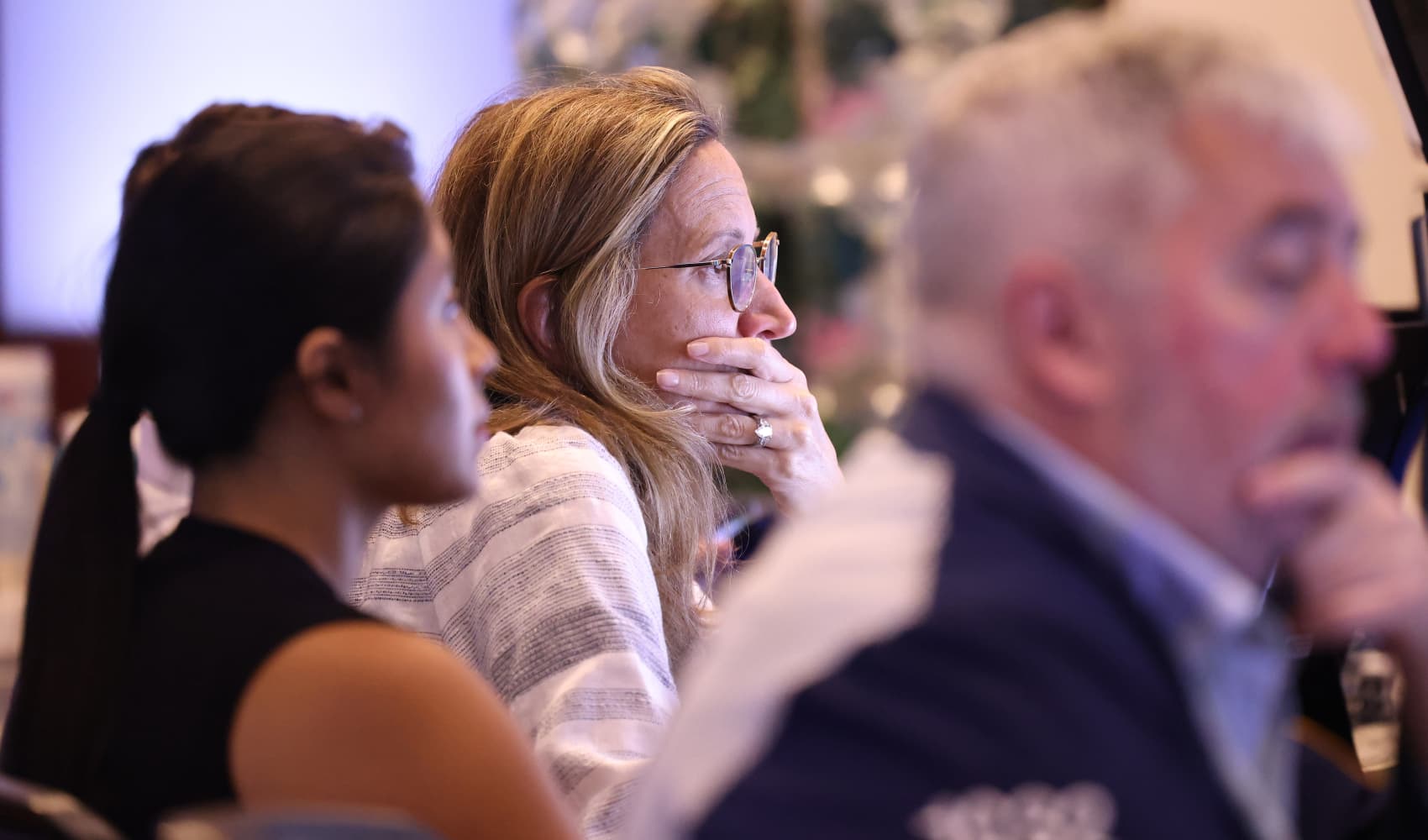
- Sterling's recent runup comes despite traders pricing in the possibility of an interest rate cut in August from the Bank of England.
- Decreasing interest rates can traditionally pressure a currency, as it reduces the potential returns that U.K. assets can offer to foreign investors.
LONDON — With sterling as one of the best performing major currencies so far this year, analysts at various investment banks believe that the British pound still has more room to run, despite the Bank of England likely cutting interest rates in the near term.
In a recent research note, experts at Goldman Sachs were upbeat on the pound, commenting that sterling "tops the list" in the G-10 basket of major currency crosses. The analysts are sticking with their bet that sterling will rise against the dollar, with a target of 1.31. The pound-dollar cross was trading near 1.28 on Wednesday morning.
UBS shared a similar sentiment, with analysts saying the U.K. "may have flipped to being the most stable political story in G-10 from the exact opposite end of the spectrum," following elections in early June that delivered a comprehensive victory for the opposition Labour Party. The faction assumed governance under Keir Starmer's leadership earlier this month.
Get top local stories in Southern California delivered to you every morning. Sign up for NBC LA's News Headlines newsletter.
"Combined with still-high rates [this] could attract capital flows into GBP after many years of being a structural sell," the UBS analysts added.
Rabobank's Head of FX Strategy Jane Foley meanwhile said that the pound "will continue to edge higher in the months ahead on hopes that investment growth can recover from a very low base."
She added, "The tone of many of the policies announced by the new Labour government in recent days are market friendly ... The appearance of order in the U.K. government coupled with an expectation of a warmer relationship with the EU should provide for some optimism."
Money Report
A new dawn?
Sterling suffered a stormy period in September 2022, when then-Prime Minister Liz Truss and her Chancellor Kwasi Kwarteng presented an unscheduled fiscal announcement. They ignored the U.K.'s Office for Budget Responsibility (OBR) and revealed plans for a series of unfunded tax cuts in a bid to spur growth in the economy.
Markets were spooked as a result, plunging the pound to near parity with the dollar. This turbulence was preceded by a period of political instability under Prime Minister Boris Johnson and his handling of Britain's departure from the European Union, the Covid-19 pandemic and the subsequent "partygate" scandal.
Move forward a few years, and stability is now the central theme of Starmer's new Labour government.
British Finance Minister Rachel Reeves has been quick to set the tone on economic and market growth, announcing a new national wealth fund aimed at driving investment in gigafactories, ports and hydrogen and a Budget Responsibility Bill reaffirming the role of the OBR.
An imminent snapback?
Sterling's recent runup comes despite traders pricing in the possibility of the Bank of England opting for an interest rate cut in August. Decreasing interest rates can traditionally pressure a currency, as it reduces the potential returns that U.K. assets can offer to foreign investors.
Market pricing on Wednesday morning suggested a 60% probability of a rate cut at the BOE's Aug. 1 meeting. This lack of certainty could lead to sharp market moves on Thursday. James Smith, ING's developed markets economist, said last week that the start of the BOE's easing cycle would "present a headwind to the resurgent pound."
Matthew Ryan, head of market strategy at financial services firm Ebury, said in emailed comments on Tuesday that "an immediate rate reduction would likely trigger some downside in the pound."
While the overall inflation number on July's print is in line with the BOE's 2% target, services inflation remained at 5.7%, above its forecast of 5.1%. The services print is closely watched by policymakers as a sign of price pressures and a catalyst for an interest rate cut on Thursday.
During a speech delivered at the Asia House in London, the Bank of England's Chief Economist Huw Pill struck a cautious tone commenting that "these indicators have hinted towards some upside risk to my assessment of inflation persistence."
But he didn't quite rule anything out, adding that, "in the absence of any big new shocks, the 'when-rather-than-if' characterization of prospective Bank Rate cuts still seems appropriate."
Sree Kochugovindan, senior research economist at Abrdn, told CNBC earlier this week that the BOE's decision on Thursday is finely balanced, but that there is a 5-4 chance of an interest rate cut. She pointed to signals in the last meeting that MPC members were in favor of a move, but noted that services inflation will be the deciding factor on the bank's next steps.
—CNBC's Jenni Reid contributed to this article.






